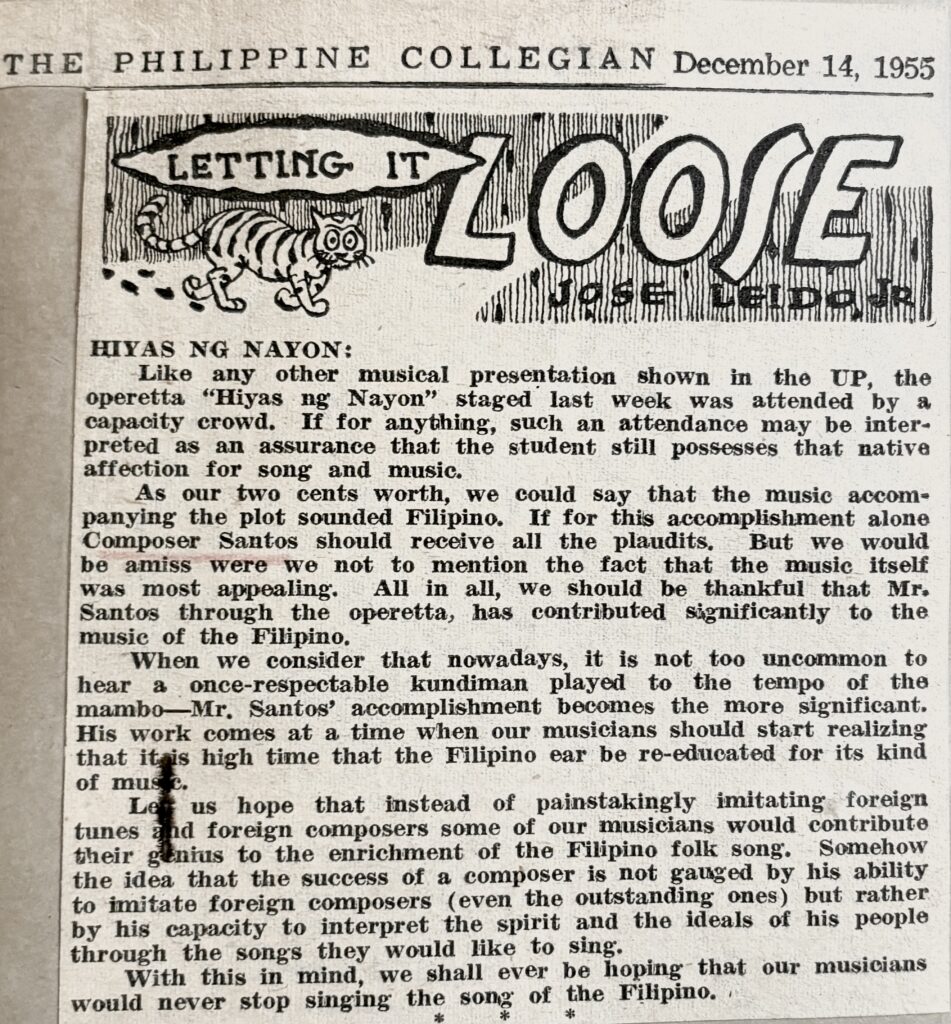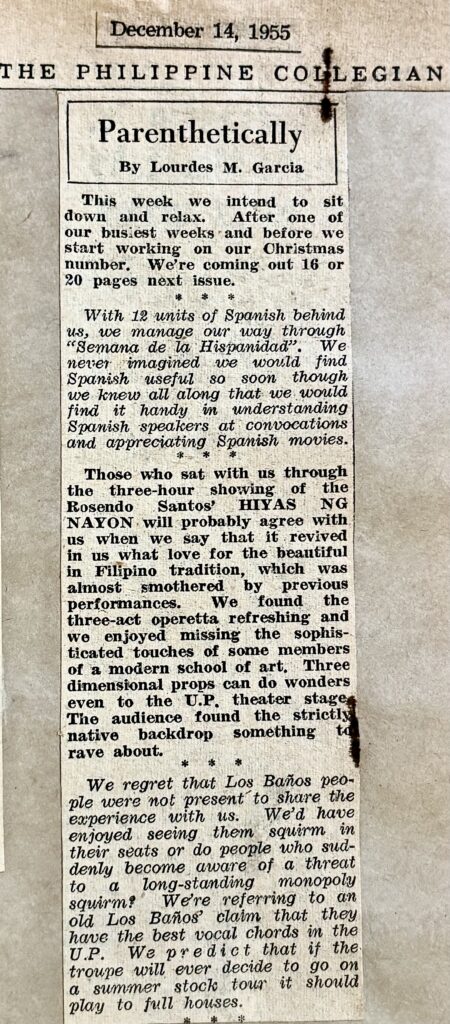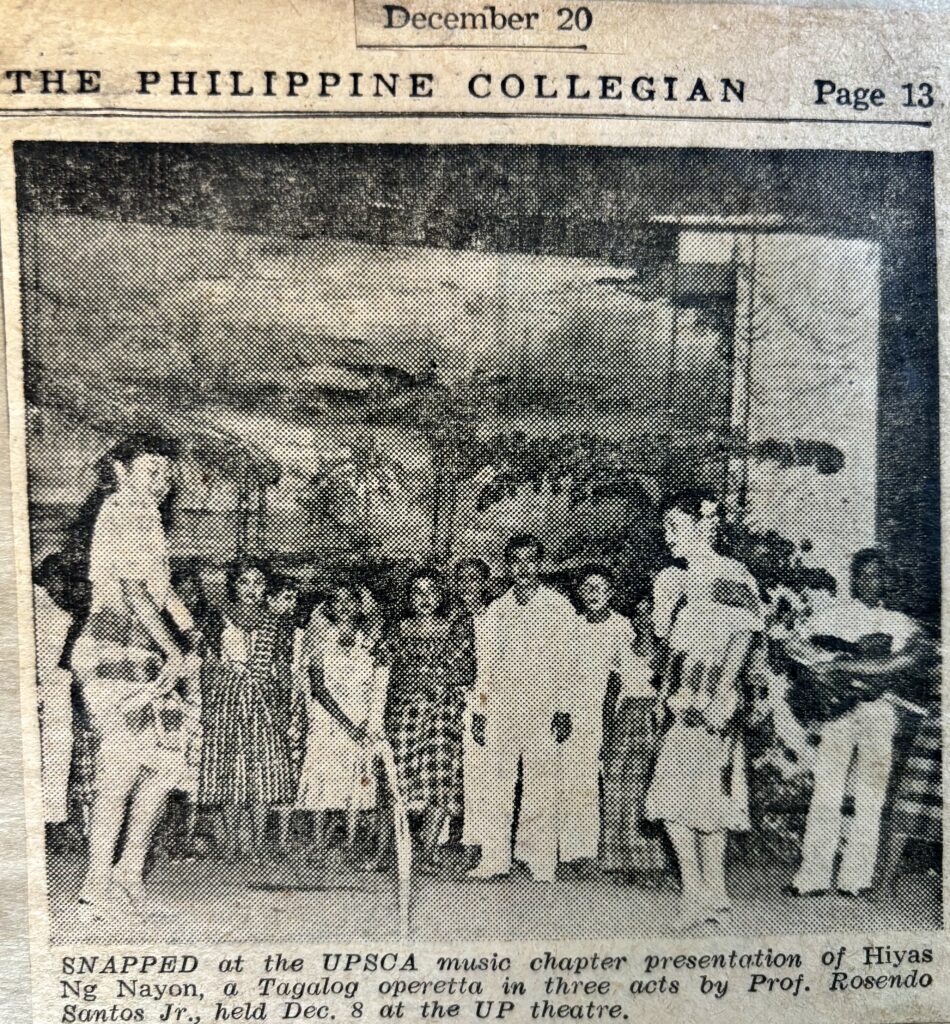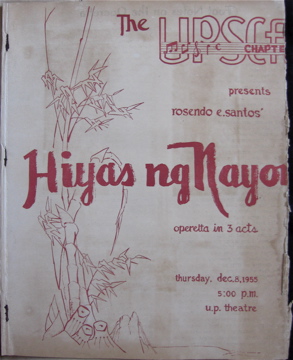Opera was first conceptualized by the Italian Florentine Camerata in the 1570s and formally produced in 1598 with Jacopo Peri’s Dafne. Once invented, the genre developed and spread internationally. The first notable production of indigenous opera in the Philippines was in 1902, Sangdugong Panaguinip by Ladislao Bonus who is dubbed as the “Father of Philippine Opera.” Operetta, or light opera emerged in the 18th century as a form of cosmopolitanism and an intentional “thumb to the nose” to the elites. Operetta would ultimately develop into the genre of musical theater.
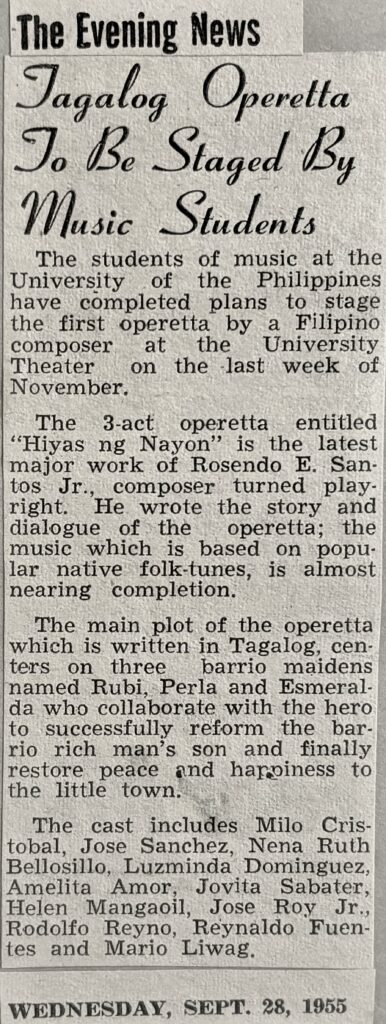
Rosendo in the 1950s was already contributing music to film scores such as “In Despair” (1950), and UP’s Dramatic Club in collaboration with director Wilfrido Ma. Guerrero. In 1955, he pioneered a new project, Hiyas Ng Nayon (Village Jewel), THE first operetta composed in Tagalog, and exploiting many indigenous folk dances, characters, costumes and plot. The production revved up in the fall of 1955 when media began alerting the public of the first performance set for December 8, 1955, at the UP Theater, followed by subsequent performances at the Maria Theater in Cavite City, Los Baños Agricultural College, Far Eastern University and Baguio City.
The following is a transcription of the preview article from The Philippine Collegian, December 1, 1955 by Leonidas J. Domingo:
The Diliman audience will soon witness a new event in the history of Philippine music when Hiyas ng Nayon will be shown at the U.P. Theater on December 8 at five o’clock in the afternoon. A recent work of prize-winning composer Rosendo E. Santos Jr., it will present young singing talents from the conservatory of music.
This musical drama combining songs and dialogue is the first operetta with music that is typically Filipino. It will be staged on a nation-wide scale in other theaters of the country after its premiere in the University of the Philippines.
Rehearsals are going on under the over-all direction of Prof. Santos, composer-playwright and conductor. Assisting him on the piano is Miss Carmine de Leon. The U.P. Symphony orchestra will provide the music background. A rondalla will be employed to depict barrio atmosphere.
A chorus of conservatory students is incorporated in the story as the villagers while a group of male voices will act as the highway men of notorious bandit Kirat. Singing in joyful mood they will be clad in colorful native costumes to beautify the twilight “batisan” scenes of the barrio.
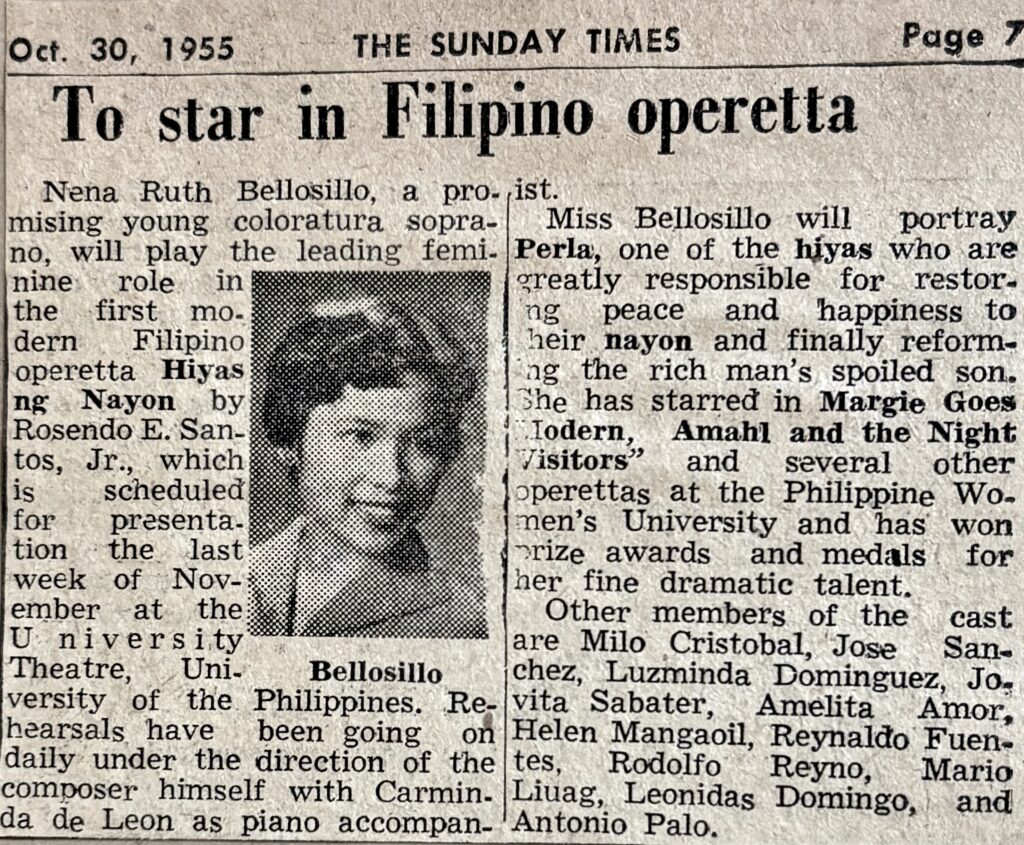
Starring in the musical play is Nena Ruth Bellosillo, a young student-soprano whose beautiful operatic voice has gained popularity not only for herself but also for the schools that she has represented. Others in the cast who have been chosen for their wonderful pleasant voices are Jose Dominguez, Helen Mangaoil, Reynaldo Fuentez, Amelita Amor, Rodulfo Reyno, Betty Sabater, Leonidas Domingo, and Mario Liwag.
The story of the play is centered on the character Eliseo who is at first a tyrant spendthrift secretly associated with the bandit Bertong Kirat. Later on, realizing his follies, Eliseo repents and saves the barrio folks from the wiles of this bandit leader who dies by his own hand.
He reconciles, too, with his forlorn sweetheart Lulu. As a disguised fortune teller who knows the whereabouts and goings-on of Kirat’s gang, she is an important character who brings banditry to an end in the barrio.
The operetta closes with a lively Finale with the villagers singing happily while Bertong Kirat dies in their midst.
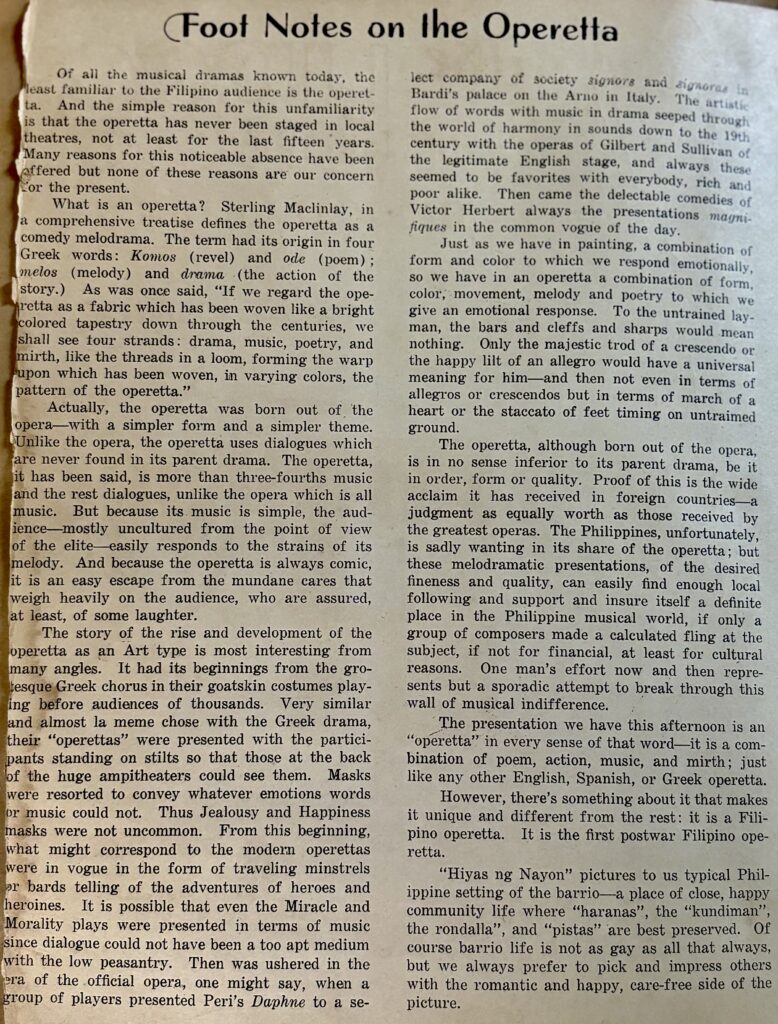
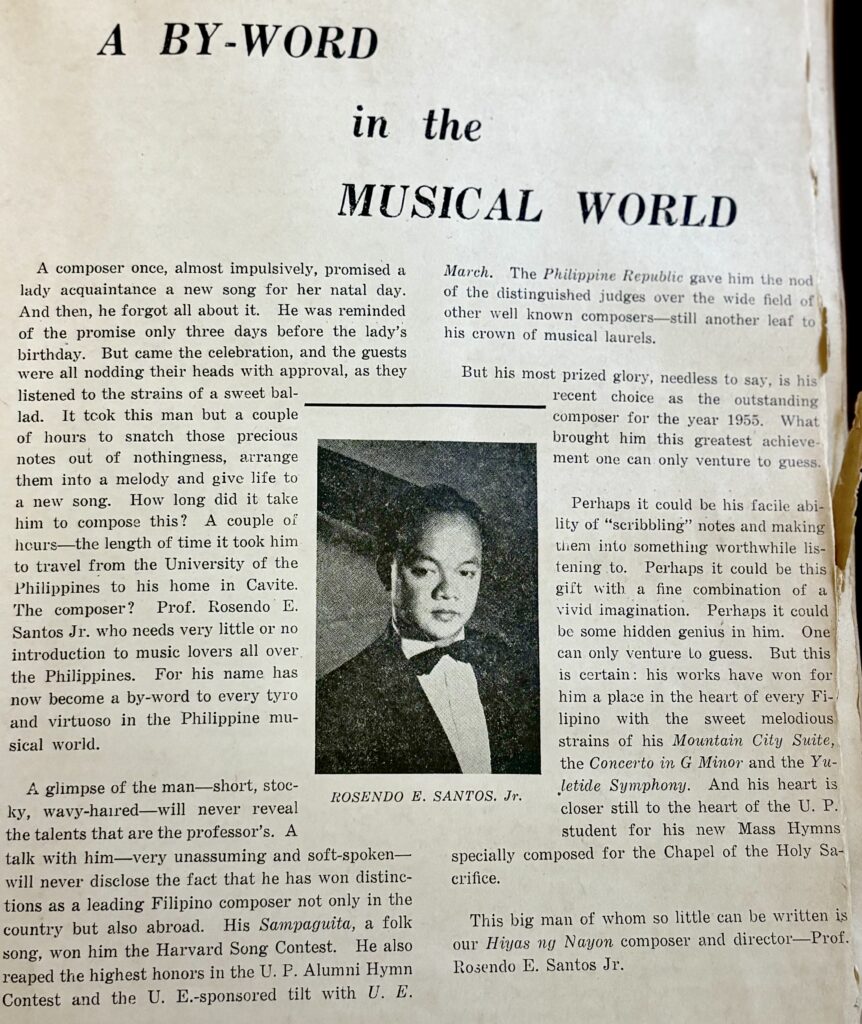
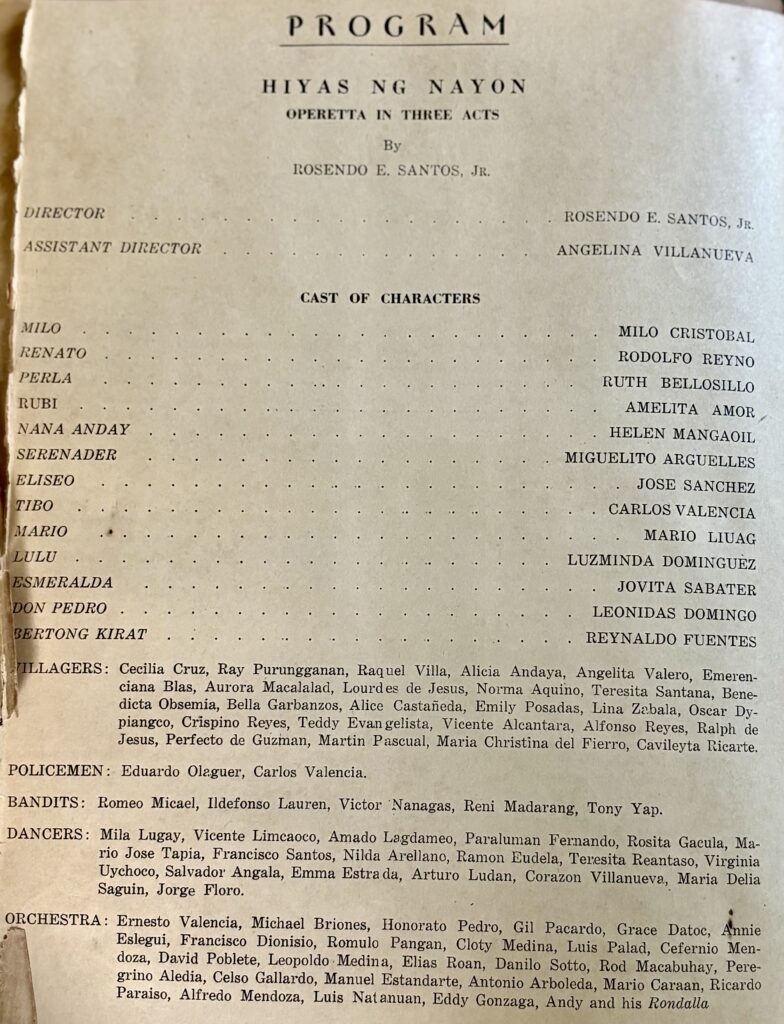

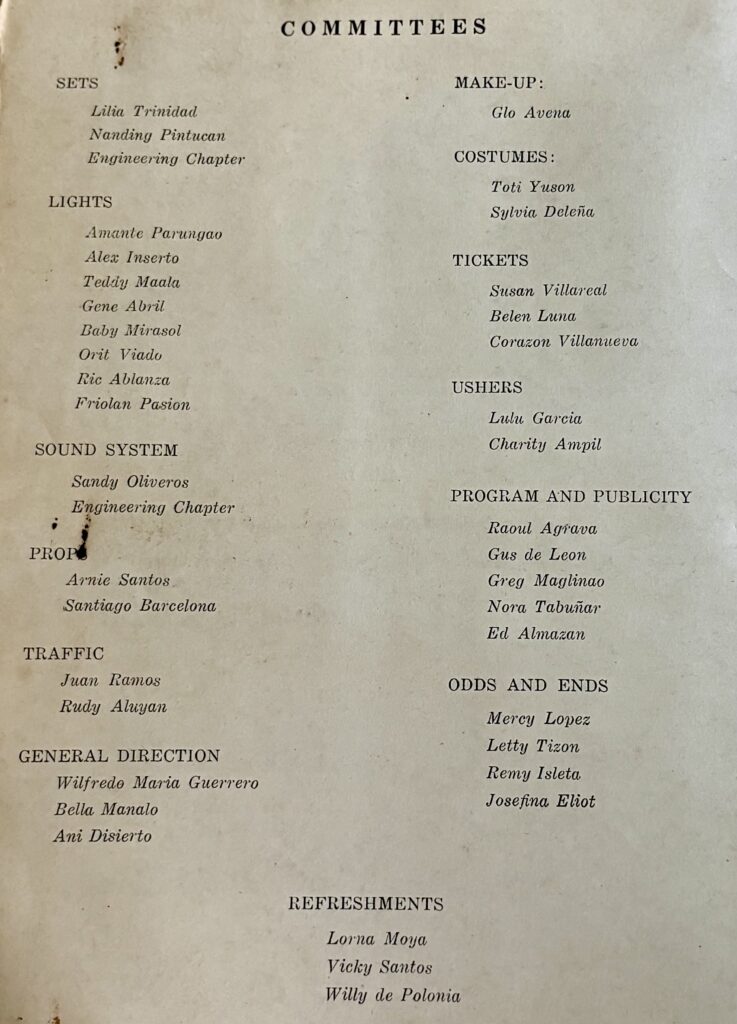
This production was met with positive reviews. The following are two such representative articles touting the success and historic significance of the production:
